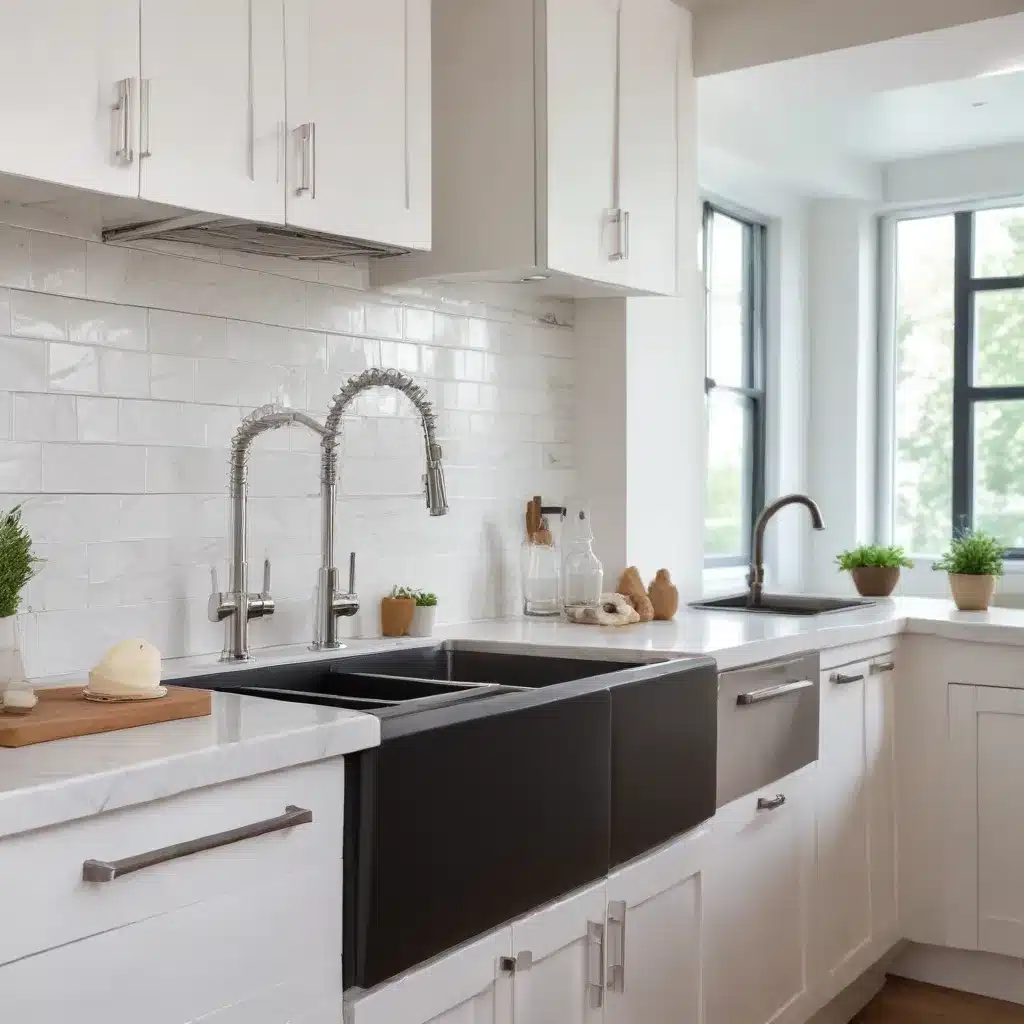
When it comes to kitchen renovations, the plumbing system often takes a backseat to more visible upgrades like cabinetry, countertops, and appliances. However, a comprehensive plumbing overhaul can dramatically improve the functionality, efficiency, and longevity of your kitchen. Whether you’re building a new kitchen from scratch or revamping an existing space, understanding the nuances of kitchen plumbing can save you time, money, and headaches down the line.
Plumbing System Considerations
Pipe Materials: The first step in a kitchen plumbing overhaul is to evaluate the existing pipe materials. Older homes may still have galvanized steel or copper piping, which can become corroded and restrict water flow over time. Upgrading to modern PEX (cross-linked polyethylene) or CPVC (chlorinated polyvinyl chloride) piping can improve water pressure, reduce the risk of leaks, and future-proof your kitchen for years to come. When selecting new pipes, consider the water pressure needs of your kitchen appliances and fixtures.
Water Pressure Optimization: Ensuring adequate water pressure is crucial for a functional and enjoyable kitchen. Low water pressure can make tasks like filling pots, operating the dishwasher, and using the kitchen faucet frustrating. By identifying and addressing any pressure-reducing issues, such as outdated or undersized pipes, you can create a smooth, efficient water flow throughout your kitchen.
Leak Detection and Prevention: Leaks in the kitchen plumbing system can lead to water damage, mold growth, and costly repairs. Consider incorporating leak detection technology, such as smart water sensors or automatic shut-off valves, to promptly alert you to any issues and minimize the impact of potential leaks. Additionally, pay close attention to the condition of supply lines, fittings, and connections, and replace any worn or compromised components.
Fixture Replacements
Faucet Upgrades: Replacing an outdated or malfunctioning kitchen faucet can have a significant impact on the overall functionality and aesthetic of your space. When selecting a new faucet, look for features like high-arc spouts, pull-down or pull-out spray heads, and water-efficient aerators. Additionally, consider the finish and style to complement your kitchen’s design. Visit ABC Home’s plumbing section for a wide range of premium faucet options.
Sink Installations: The kitchen sink is the heart of the plumbing system, and upgrading to a new sink can transform the look and feel of your space. When choosing a new sink, consider the material (e.g., stainless steel, composite, or ceramic), the number of bowls, and the depth and configuration that best suits your needs. Ensure the new sink is properly installed and secured to the countertop, with appropriate connections to the drain and water supply lines.
Dishwasher Connections: If your kitchen is undergoing a major renovation, it’s the perfect time to revisit the dishwasher plumbing. Ensure the dishwasher is properly connected to the hot water supply and the drain line, with appropriate backflow prevention measures in place. This attention to detail can help prevent water damage and optimize the performance of your dishwasher.
Water Conservation Strategies
Low-Flow Technologies: As water scarcity becomes an increasingly pressing global issue, incorporating water-efficient fixtures and appliances into your kitchen renovation is a smart investment. Look for kitchen faucets and showerheads that carry the ENERGY STAR label, which indicates they meet strict water-saving criteria. These low-flow fixtures can reduce water consumption without compromising performance.
Greywater Recycling: For homeowners seeking to take water conservation to the next level, a greywater recycling system can be a game-changer. Greywater is the relatively clean wastewater generated from sources like sinks, showers, and washing machines. By diverting this greywater for landscape irrigation or toilet flushing, you can dramatically reduce your household’s freshwater usage. Consult with a plumbing professional to design and install a greywater system that aligns with your local regulations and fits seamlessly into your kitchen renovation.
Energy-Efficient Appliances
High-Efficiency Dishwashers: When upgrading your kitchen, consider investing in a high-efficiency dishwasher that not only saves water but also reduces energy consumption. ENERGY STAR-certified dishwashers are designed to use less water and energy than their conventional counterparts, helping you save money on utility bills while minimizing your environmental impact. Look for features like adjustable racks, low-noise operation, and improved cleaning performance.
Smart Water Heaters: The water heater is a crucial component of any kitchen plumbing system, and today’s advanced models offer significant efficiency gains. Tankless or “on-demand” water heaters, for example, heat water only when needed, eliminating the energy waste associated with constantly maintaining a large tank of hot water. Heat pump water heaters are another energy-efficient option, using electricity to transfer heat rather than generating it directly.
Accessibility Enhancements
Wheelchair-Friendly Design: As people’s needs and abilities evolve over time, it’s essential to incorporate accessibility features into your kitchen plumbing upgrades. Adjustable-height sinks and lever-style faucet handles can make the kitchen more user-friendly for individuals in wheelchairs or with limited mobility. Ensure that the sink and surrounding countertop provide adequate clearance and maneuverability.
Age-in-Place Modifications: Designing a kitchen with aging in mind can enable homeowners to comfortably and safely use the space for years to come. This may include installing grab bars near the sink and appliances, using non-slip flooring materials, and selecting lever-style fixtures that are easy to operate. By prioritizing accessibility, you can future-proof your kitchen and make it a comfortable, welcoming space for all.
When it comes to kitchen plumbing, a comprehensive overhaul can yield significant benefits in terms of functionality, efficiency, and long-term value. By carefully considering the materials, water pressure, and fixture choices, as well as incorporating water-saving technologies and accessibility features, you can create a kitchen that not only looks great but also operates seamlessly. With the right planning and expert guidance, your kitchen plumbing upgrade can set the stage for a modernized, future-ready cooking and entertaining hub.

















